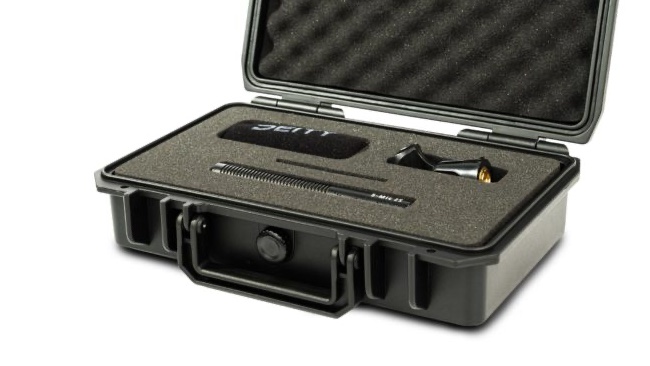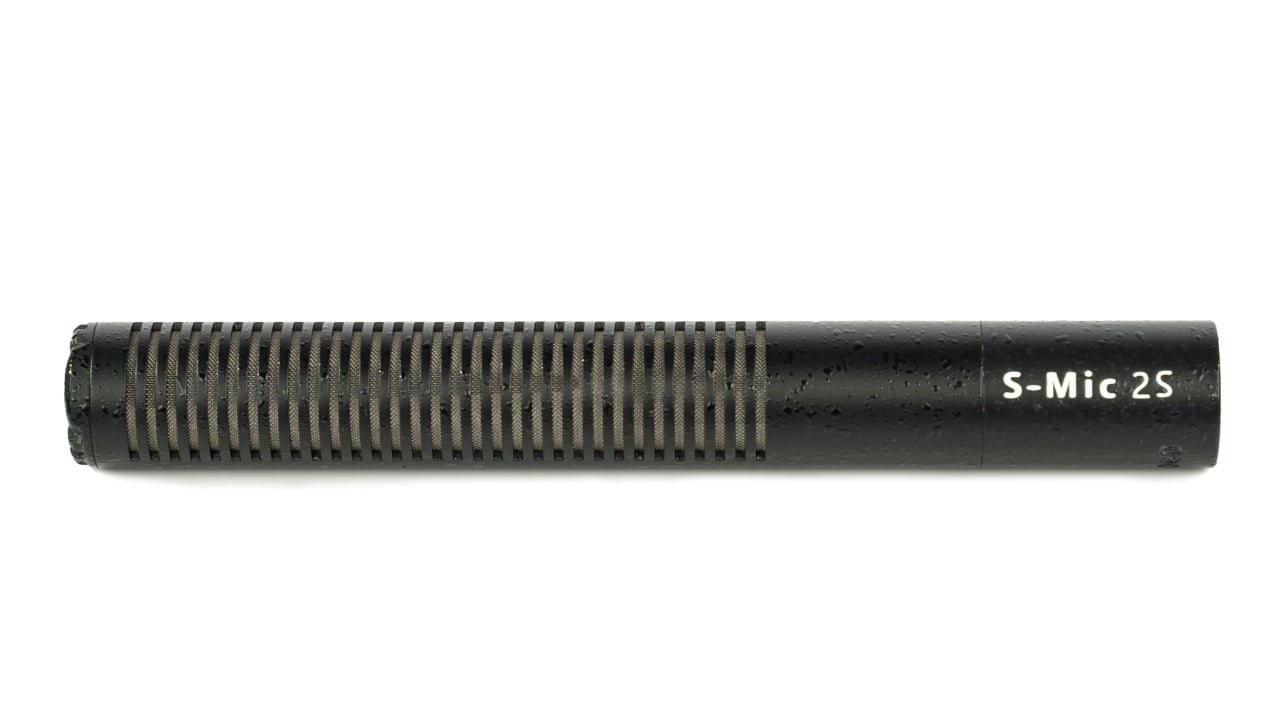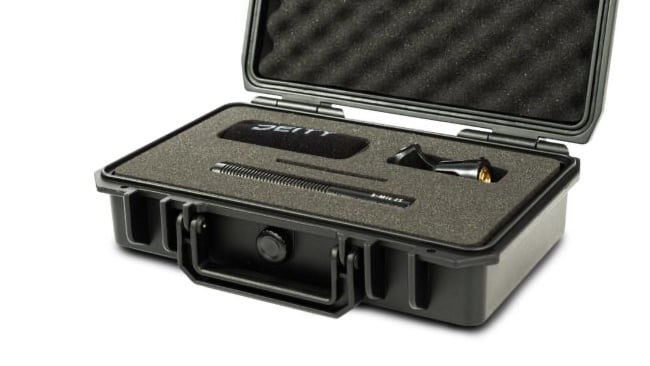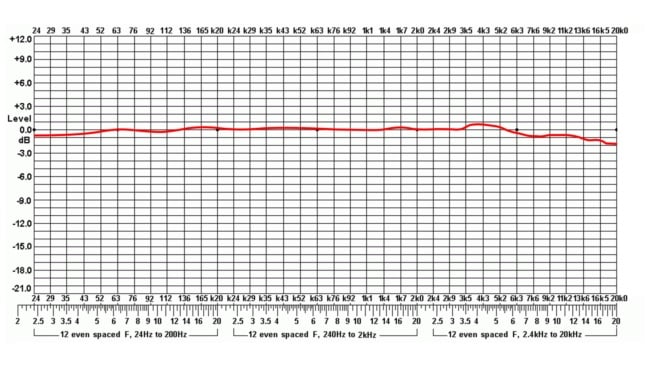

Deity’s second model shotgun microphone is a short interference tube shotgun that has the same look and build quality as its larger sibling, the S-Mic 2. It’s also made of brass, keeping out RF interference, but it’s smaller and lighter.
While the S-Mic 2 is the same length as a Sennheiser MKH 416 and other shotgun microphones that are destined to be used outdoors, the S-Mic 2S (the “S” stands for “Short” or “Small”) is about half as long and weighs less; only 85 grams. The S-Mic 2 raised quite a few eyebrows because it only costs around 350 Euros but has a performance that comes close to that industry standard, the MKH 416. As most shotgun mics, though, it doesn’t handle indoors sound very well due to the inevitable room reverberation and reflection of sound in smaller spaces.
Indoors is the keyword of the S-Mic 2S, which might be not as good at rejecting off-axis sound as its larger brother, but which, unlike its family member, does perform much better indoors.
In contrast to the S-Mic 2, the 2S also auto-switches between 24V or 48V of phantom power. If 24V is all you have, you can still use it; you can’t have any other shotgun mic that is not self-powered as far as I know.

The indoors performance which the new S-Mic 2S is much better at than larger shotgun mics is related to acoustically caused comb filtering. This is a phenomenon that is caused by the time delay that’s produced by acoustical reflections and these don’t seem to bother the S-Mic 2S that much.
While you still need to make sure there isn’t too much reverb going on in a room to end up with a pristine recording, the room doesn’t have to be specially treated as with traditional shotgun microphones. If you don’t have sound deadening material at hand, a few blankets or cushions will do — of course, all depending on how big a room it is. Still, when you interview someone using the S-Mic 2S, you won’t have to ask them if they can please bury their head in a stack of laundry to get rid of the strange gurgling, bubbling and other distracting background sounds caused by reflections.
As for the sound itself, the S-Mic 2S comes with a frequency response curve that is not 100% flat. There are a few small bumps at the low end and a somewhat bigger one in the 2.4KHz region, but nothing that would give the mic more pizazz or to compensate for the use of cheaper electronics. Instead, the microphone is pretty much flat, which is a good thing, especially when you’re going to use recordings with it in a mix.
Regardless, the sound the mic produces is quite agreeable and accurate, and – using a totally subjective term – voice recordings sound more “relaxed” to my ears than those made with an S-Mic 2 indoors. However, when pitted against the DPA d:dicate 4017 I reviewed earlier this year and of which the interference tube has a comparable length, the S-Mic 2S is lacking a tiny bit in the lows but has a bit more clarity in the highs; all in all, there’s a very pleasing balance in the sounds I recorded so far, which range from an untreated room to a driving car on a bumpy road.

The S-Mic 2S has a frequency range of 50 Hz to 20 kHz, an equivalent noise level of 15 dB A-Weighted (3dB more than the S-Mic 2), a maximum SPL of 130 dB and a THD of less than 0.5%. It’s sold with a 3/8″ microphone clip, a foam windscreen, all wrapped in a hard waterproof case. There are no accessories yet for the mic. For my tests, I used the Rycote Pistol Grip that is normally used with long shotgun mics.
And just as its bigger brother, the S-Mic 2S has a special coating on its circuit board that allows it to become wet without causing problems, so you could use it for outdoors recordings as well. Although, in my opinion, the S-Mic 2 is better suited for those than the new mic, if only because it rejects off-axis noise better. Given the price of Deity mics, you can have one of each in your kit bag and use them in the environment where they are the best fit.
Tags: Audio


Comments